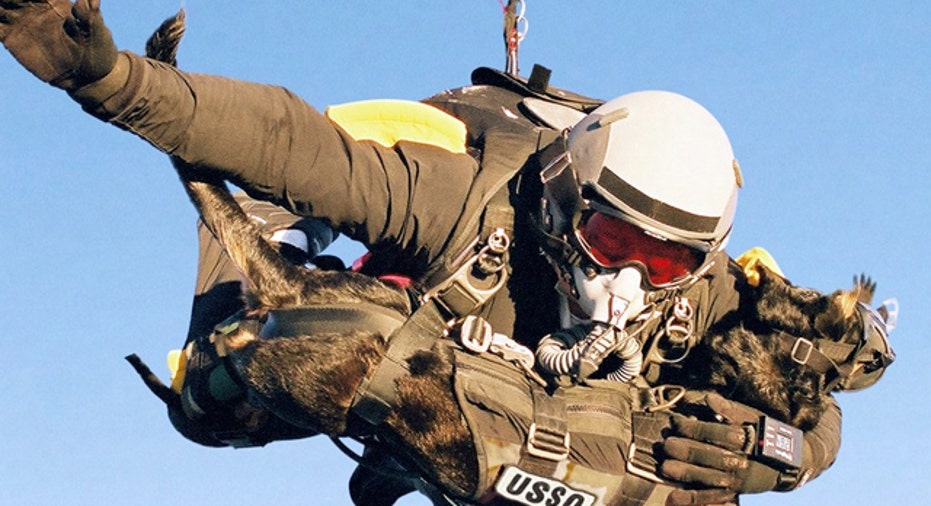Five Lessons Entrepreneurs can Learn From Navy SEALs

There has been a surge in interest with the world of the Navy SEALs since the Usama bin Laden action (this piece in the WSJ was a particularly good profile) and I confess to being caught up in it myself.
One of my portfolio company CEOs, Will Tumulty of Ready Financial, is a former Navy SEAL (1990-1995). Will was kind enough to introduce me to a SEAL classmate of his, Brendan Rogers (SEAL 1990-2000), who joined me and 20 NYC CEOs/founders from the tech scene recently to talk about the SEALs – the training, the planning and the operations behind their combat operations – as well as draw out some relevant lessons for entrepreneurs.
Brendan went on to HBS and McKinsey after the SEALs and then started his own hedge fund with a partner, so he had an interesting, multi-faceted perspective.
The discussion was wide-ranging and entertaining. The five key lessons Brendan highlighted were as follows:
* What’s hard is good. SEALs go through an intensive six-month training program called Basic Underwater Demolition/SEAL training (BUD/S). That training program is designed to test a candidate’s physical and mental limits. Traditionally, by the time of SEAL graduation, the attrition rate is as high as 70%.
SEALs quickly learn that the punishment and pain of training hardens their minds and bodies to adapt to tough environs. Brendan pointed out that startup executives who go through hard times should learn to relish them, recognizing that the hard times will toughen the team and train them properly for “battle.”
* 80% training, 20% execution. SEALs are incredibly well-trained and when they are not on actual combat deployments, they are spending the vast majority of their time training for a number of different types of missions. In contrast, at startups, executives typically spend 100% of their time executing and zero percent of their time training. Brendan emphasized the importance of training and practice in all areas – employee onboarding, management practices, etc.
He commented on the importance of training for unexpected situations. The simultaneous shooting of three Somali pirates at sea as part of a hostage rescue two years ago was an example of the kind of outcome possible when SEALs train under all possible conditions. The CEOs in the room had wide eyes and were certainly thinking hard about their training regimens and scenario planning after that example.
* Every seat counts. Brendan pointed out the price of settling for mediocrity, even in a big organization. Every SEAL needs to know with 100% confidence that the man behind them will be able to save their life and get them out of a bad situation.
The CEOs in the room were asked if they could say the same about their management teams and if those management teams, in turn, could say that about their lieutenants. One CEO objected that he had 1000 employees in his company and couldn’t possibly hire all “A’s.”
Brendan replied by citing the example of D Day. Eisenhower planned D Day with a small number of subordinates who he turned to and said, select 12 men underneath you who you can trust with your life to execute this mission. Each of those men did the same and so on and so on. That cascading effect resulted in the successful employment and combat engagement of over 2 million troops throughout Europe. The lesson? Don’t let a large organization be an excuse for mediocrity.
* Everyone is expendable. The SEALs are trained in a nearly identical manner and no one SEAL is indispensable to the unit or the mission. The nature of combat is that anyone can be lost at any time. Entrepreneurial companies have a harder time executing on this philosophy since there are specialists and superstars, but Brendan’s message was to make sure contingency plans were thought through for any set of personnel circumstances.
* You never know the measure of a person until they are tested. As mentioned earlier, the SEALs training program weeds out 70% of participants. Brendan conveyed that the people he thought would never drop out did while others proved to be more resilient and tougher than imagined. Until your people are really tested (see “what is hard is good”), you can never be sure who will step up and who will falter. One sure sign, based on pattern recognition, is that those that talk tough and are full of bluster are predictably those that are the first to blanche in the face of adversity. Quiet strength and determination in a startup are invaluable. When you see it in your people, bottle it.
Everyone left with a great appreciate for those brave men who serve our country so ably, and the system behind it that produces such a consistent, excellent “product.” Brendan is also the co-founder of the Navy SEALs Foundation, a non-profit that helps take care of the families of SEALs when things don’t go as smoothly as they did in Pakistan a few weeks ago. I was inspired to make a donation to the organization immediately after the dinner.
One final humorous note – Brendan observed that the spouses of Navy SEALs are as tough as nails themselves and impossible to impress. They still make their spouses take out the garbage, do the dishes and change diapers – no matter how impressive their accomplishments in the field of battle. I suspect many startup executives have similar, appropriately humbling marital arrangements.
Jeff Bussgang is a former entrepreneur and partner at Flybridge Capital Partners. This article originally appeared on his blog Seeing Both Sides. The views expressed are his own.



















